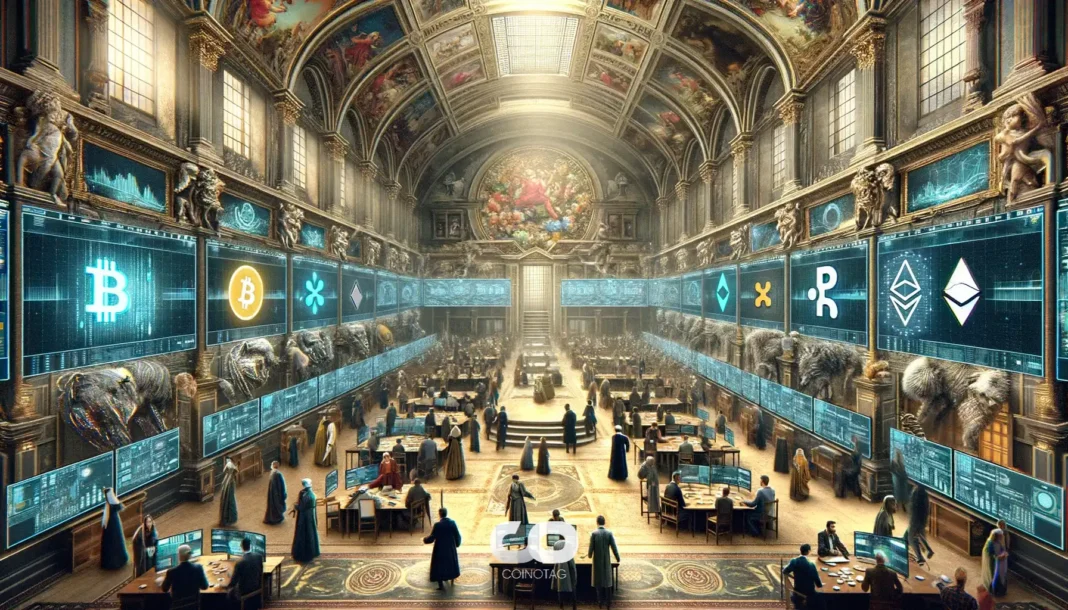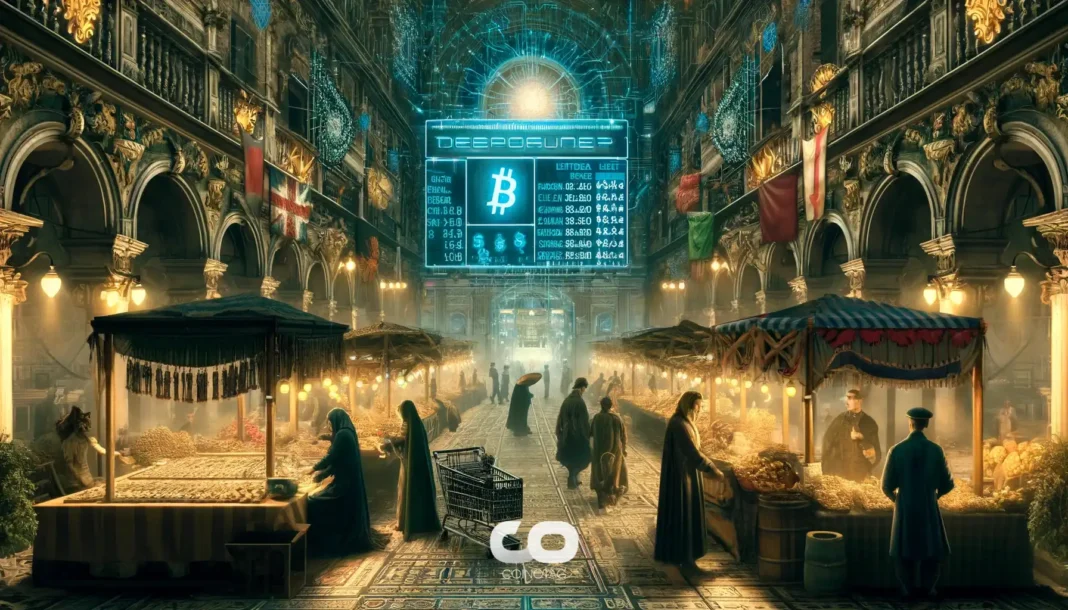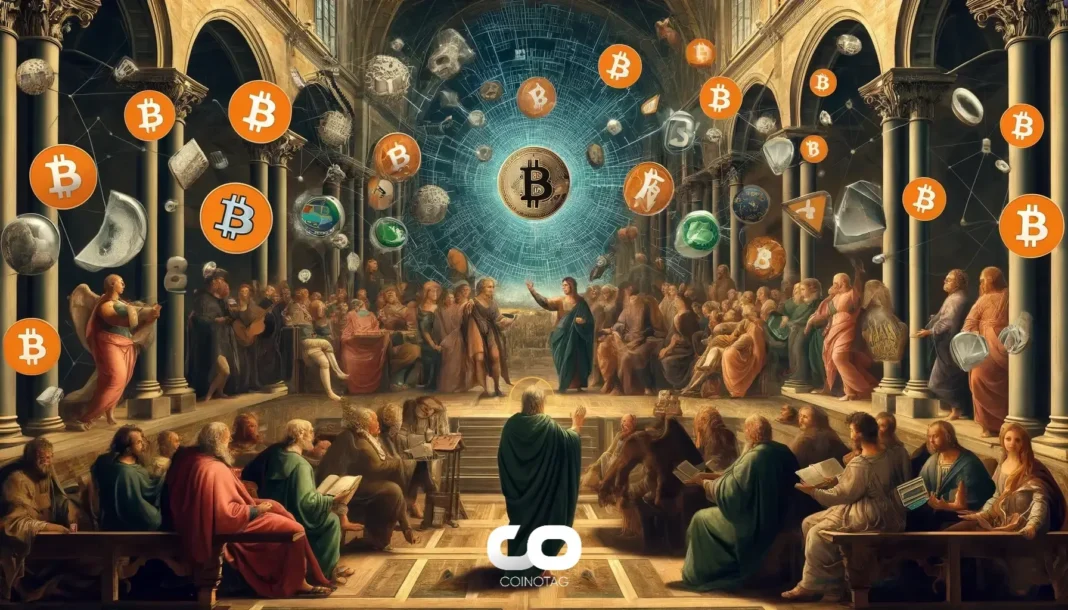| COINOTAG recommends • Exchange signup |
| 💹 Trade with pro tools |
| Fast execution, robust charts, clean risk controls. |
| 👉 Open account → |
| COINOTAG recommends • Exchange signup |
| 🚀 Smooth orders, clear control |
| Advanced order types and market depth in one view. |
| 👉 Create account → |
| COINOTAG recommends • Exchange signup |
| 📈 Clarity in volatile markets |
| Plan entries & exits, manage positions with discipline. |
| 👉 Sign up → |
| COINOTAG recommends • Exchange signup |
| ⚡ Speed, depth, reliability |
| Execute confidently when timing matters. |
| 👉 Open account → |
| COINOTAG recommends • Exchange signup |
| 🧭 A focused workflow for traders |
| Alerts, watchlists, and a repeatable process. |
| 👉 Get started → |
| COINOTAG recommends • Exchange signup |
| ✅ Data‑driven decisions |
| Focus on process—not noise. |
| 👉 Sign up → |
-
BONE token’s unique role in Shibarium reveals a strategic mechanism behind SHIB’s growing scarcity.
-
Recent data highlights a dramatic surge in SHIB burns, underscoring the community’s active participation in reducing circulating supply.
-
According to COINOTAG, the integration of BONE as gas fees fuels an automatic conversion process that supports SHIB tokenomics effectively.
Discover how BONE powers Shibarium and drives SHIB burns up 2,753%, enhancing token scarcity and community engagement in the crypto ecosystem.
BONE Token’s Integral Function in Shibarium’s Ecosystem
The BONE token, often perceived merely as a meme or joke token, holds a pivotal role within the Shibarium layer-2 blockchain solution. Beyond its playful branding, BONE operates as the primary gas token, facilitating transaction fees and governance through a decentralized autonomous organization (DAO) structure. This dual functionality not only supports network operations but also strategically influences SHIB’s tokenomics.
One of the most innovative aspects of BONE’s utility is its contribution to SHIB scarcity. Gas fees paid in BONE are partially allocated to a mechanism that converts accumulated BONE into SHIB tokens. These SHIB tokens are then sent to unspendable wallets, effectively removing them from circulation. This built-in burn process creates a deflationary pressure on SHIB, aligning with long-term value appreciation strategies.
Additionally, the Shiba Inu community benefits from a public burn portal accessible via the official website, empowering users to voluntarily burn SHIB tokens. This feature fosters community involvement and transparency, reinforcing the token’s deflationary model.
| COINOTAG recommends • Professional traders group |
| 💎 Join a professional trading community |
| Work with senior traders, research‑backed setups, and risk‑first frameworks. |
| 👉 Join the group → |
| COINOTAG recommends • Professional traders group |
| 📊 Transparent performance, real process |
| Spot strategies with documented months of triple‑digit runs during strong trends; futures plans use defined R:R and sizing. |
| 👉 Get access → |
| COINOTAG recommends • Professional traders group |
| 🧭 Research → Plan → Execute |
| Daily levels, watchlists, and post‑trade reviews to build consistency. |
| 👉 Join now → |
| COINOTAG recommends • Professional traders group |
| 🛡️ Risk comes first |
| Sizing methods, invalidation rules, and R‑multiples baked into every plan. |
| 👉 Start today → |
| COINOTAG recommends • Professional traders group |
| 🧠 Learn the “why” behind each trade |
| Live breakdowns, playbooks, and framework‑first education. |
| 👉 Join the group → |
| COINOTAG recommends • Professional traders group |
| 🚀 Insider • APEX • INNER CIRCLE |
| Choose the depth you need—tools, coaching, and member rooms. |
| 👉 Explore tiers → |
Analyzing the Surge in SHIB Burns and Its Implications
Recent analytics from Shibburn, a reputable wallet tracking platform, reveal a remarkable 2,753.51% increase in SHIB burn rate within a 24-hour period. This spike was driven by the transfer of over 6.4 million SHIB tokens to dead-end addresses, commonly referred to as “inferno” wallets, where tokens are permanently locked and inaccessible.
Significantly, the two largest burn transactions accounted for 5.35 million and 1 million SHIB respectively, highlighting coordinated community efforts or large holder participation in reducing supply. While daily burn volumes have surged dramatically, weekly burn data presents a more sustained picture: a 360.90% increase over seven days, amounting to more than 135 million SHIB tokens removed from circulation.
| COINOTAG recommends • Exchange signup |
| 📈 Clear interface, precise orders |
| Sharp entries & exits with actionable alerts. |
| 👉 Create free account → |
| COINOTAG recommends • Exchange signup |
| 🧠 Smarter tools. Better decisions. |
| Depth analytics and risk features in one view. |
| 👉 Sign up → |
| COINOTAG recommends • Exchange signup |
| 🎯 Take control of entries & exits |
| Set alerts, define stops, execute consistently. |
| 👉 Open account → |
| COINOTAG recommends • Exchange signup |
| 🛠️ From idea to execution |
| Turn setups into plans with practical order types. |
| 👉 Join now → |
| COINOTAG recommends • Exchange signup |
| 📋 Trade your plan |
| Watchlists and routing that support focus. |
| 👉 Get started → |
| COINOTAG recommends • Exchange signup |
| 📊 Precision without the noise |
| Data‑first workflows for active traders. |
| 👉 Sign up → |
This sustained burn activity indicates a robust commitment from the SHIB community to enhance scarcity, which could have positive implications for token valuation and market dynamics. Notably, a single burn event earlier in the week involved 100 million SHIB tokens, underscoring the scale at which these deflationary mechanisms operate.
Community Engagement and Future Outlook for SHIB Tokenomics
The integration of BONE as a functional gas token within Shibarium and the transparent burn mechanisms have galvanized the SHIB community, fostering active participation in token management. This synergy between technology and community-driven initiatives exemplifies a modern approach to cryptocurrency sustainability.
| COINOTAG recommends • Traders club |
| ⚡ Futures with discipline |
| Defined R:R, pre‑set invalidation, execution checklists. |
| 👉 Join the club → |
| COINOTAG recommends • Traders club |
| 🎯 Spot strategies that compound |
| Momentum & accumulation frameworks managed with clear risk. |
| 👉 Get access → |
| COINOTAG recommends • Traders club |
| 🏛️ APEX tier for serious traders |
| Deep dives, analyst Q&A, and accountability sprints. |
| 👉 Explore APEX → |
| COINOTAG recommends • Traders club |
| 📈 Real‑time market structure |
| Key levels, liquidity zones, and actionable context. |
| 👉 Join now → |
| COINOTAG recommends • Traders club |
| 🔔 Smart alerts, not noise |
| Context‑rich notifications tied to plans and risk—never hype. |
| 👉 Get access → |
| COINOTAG recommends • Traders club |
| 🤝 Peer review & coaching |
| Hands‑on feedback that sharpens execution and risk control. |
| 👉 Join the club → |
Looking ahead, the continued use of BONE for gas fees and the public burn portal are expected to maintain upward pressure on SHIB’s scarcity. Investors and holders should monitor burn rates and transaction volumes as key indicators of network health and token value trajectory.
Conclusion
The revelation of BONE’s “secret” utility within Shibarium highlights a sophisticated design that transcends its meme token origins. By serving as gas and enabling automatic SHIB burns, BONE plays a crucial role in reinforcing SHIB’s deflationary ecosystem. The recent exponential increase in SHIB burns reflects strong community engagement and a strategic effort to enhance token scarcity. Together, these factors contribute to a promising outlook for SHIB’s long-term value proposition within the evolving crypto landscape.
| COINOTAG recommends • Members‑only research |
| 📌 Curated setups, clearly explained |
| Entry, invalidation, targets, and R:R defined before execution. |
| 👉 Get access → |
| COINOTAG recommends • Members‑only research |
| 🧠 Data‑led decision making |
| Technical + flow + context synthesized into actionable plans. |
| 👉 Join now → |
| COINOTAG recommends • Members‑only research |
| 🧱 Consistency over hype |
| Repeatable rules, realistic expectations, and a calmer mindset. |
| 👉 Get access → |
| COINOTAG recommends • Members‑only research |
| 🕒 Patience is an edge |
| Wait for confirmation and manage risk with checklists. |
| 👉 Join now → |
| COINOTAG recommends • Members‑only research |
| 💼 Professional mentorship |
| Guidance from seasoned traders and structured feedback loops. |
| 👉 Get access → |
| COINOTAG recommends • Members‑only research |
| 🧮 Track • Review • Improve |
| Documented PnL tracking and post‑mortems to accelerate learning. |
| 👉 Join now → |







